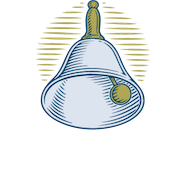
The EMS visual arts program seeks to foster creativity, problem solving, and self-expression as it relates to each child’s level of development from toddler to middle school.
Art lessons use a variety of auditory, kinesthetic, and visual components. Students are encouraged to experience the art process as each concept is presented utilizing a variety of 2-D and 3-D materials to help them truly absorb and understand the lesson’s objectives. Lessons include drawing, painting, sculpture, collage making, and print making.

Program Objectives:
- Students will recognize and understand concepts of line/shape/form
- how a connection of point becomes a line,
- how a 2-D shape becomes a 3-D shape-as in sculpture,
- how a closed line of points becomes a line-showing movement, edges, and
- expressing feelings.
2. Students will recognize and understand concepts of color:
- color terms and definitions: hue, value, shade, chroma, primary, secondary, and intermediate colors,
- monochromatic/complementary colors, and
- color wheel: the colors and sequences.
3. Students will recognize and understand concepts of texture:
- surface variations-implied or actual markings,
- sense varying texture by touch and sight,
- describe textures with words, and
- create a variety of textures.

4. Students will recognize and understand basic patterns of organization:
- repetition/pattern,
- sequence, an
- universal basic structures: radial, spiral, dendritic/branching, orbital, gradient, mosaic, modular chain, grid, waves closure, symmetry, and rhythm.
5. Students will recognize whole-to-part relationships:
- process of reduction of whole to parts,
- process of construction of parts to a whole,
- grouping by similarities and differences, and
- spatial awareness-positive and negative space.
6. Students will recognize and understand the processes of change:
- sequential process,
- abstraction,
- relationships between objects and symbols before and after change occurs,
- transformation, and
- cycles of nature and time.
